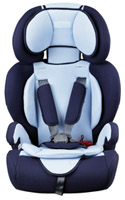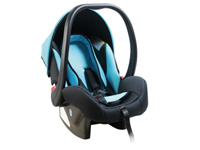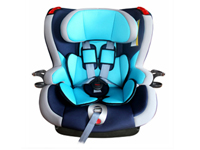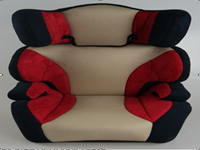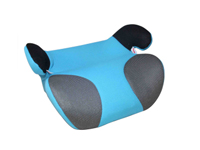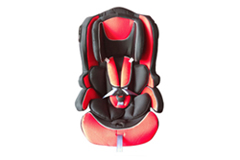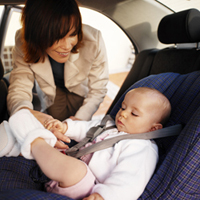
| Child safety seats (sometimes referred to as an infant safety seat, a child restraint system, a restraint car seat, or ambiguously as car seats) are seats designed specifically to protect children from injury or death during collisions. Automobile manufacturers may integrate child safety seats directly into their vehicle's design. Most commonly, these seats are purchased and installed by consumers. Many regions require children defined by age, weight, and/or height to use a government-approved child safety seat when riding in a vehicle. Child safety seats provide passive restraints and must be properly used to be effective. However, many child safety restraints in countries such as Canada and the United States are not used properly. To tackle this negative trend, Health officials and child safety experts produce child safety videos to teach proper car seat installation to parents and caregivers. 【More】 |
Types of Child Seats
| Rearward-Facing Baby Seats | Group 0: for babies up to 10 kgs (22 lbs) roughly from birth to 6-9 months, or (Group 0 baby seats are no longer produced). Group 0+: for babies up to 13kg (29lbs) roughly from birth to 12-15 months 【More】 |
| Forward-Facing Child Seat | Group 1: for children weighing 9-18 kgs (20-40 lbs) roughly from 9 months - 4 years. Once children have outgrown a rearwards facing seat, the best option is to use a Group 1 seat with an integral harness; the large area of the harness helps to reduce the risk of injury if there is a crash. The bottom attachment between the legs will also prevent the child from sliding under, and out of, the harness. 【More】 |
| Booster Seats | Group 2: for children weighing 15 - 25 kgs (33 - 55 lbs) roughly 4 to 6 years. Group 3: for children weighing 22 - 36 kgs (48 - 79 lbs) roughly from 6 - 11 years. Booster seats that only fit into Group 2 or only into Group 3 are no longer produced and modern booster seats are designed for children between 15kg and 36kg (33 - 79 lbs). 【More】 |
| Booster Cushions | Booster cushions can be approved for Groups 2 and Group 3, although some are only approved for just Group 3. You should ensure your child is within the weight range of any booster seat or booster cushion. 【More】 |
History
After the first automobile was manufactured and put on the market in the early 1900s, many modifications and adjustments have been implemented to protect those that drive and ride in these vehicles. Most restraints were put into place to protect adults without regard for children, infant through pre-school age. Though child seats were beginning to be manufactured in the early 1930s, their purpose was not the safety of children. The purpose was to act as booster seats to bring the child to a height easier for the driving parent to see them. It wasn’t until 1962 that seats were invented with the purpose of protecting a child, by Leonard Rivkin, of Denver Colorado.
How to Choosing the Perfect Car Seat
| There are several types of car seats available based on their features. So at first, determine which car seat type serves your needs best. The first car seat type is called the rear-facing or infant-only car seat and is used for infants whose weights range between 5 and 20 pounds. These car seats include a handle so that you can take a seated infant on a drive, by snapping the car seat into a frame or a stroller. Most models feature a detachable base that can be left fixed in the car. This type of a car seat should be angled properly so as to protect the baby, at approximately 45 degrees, and that is why most seats have onboard angle indicators and adjusters.【More】 |
More information for you and your lovely baby: Click to See More
Car Seat Safety: Avoid 10 Common Mistakes
| | Car seat safety isn't child's play. Understand 10 common mistakes parents make when installing and using car seats. Car seat safety is crucial for protecting your child during travel, but knowing how to safely install a car seat and buckle up your child as he or she grows can be difficult. Check out 10 common mistakes parents often make when it comes to car seat safety — and how to avoid them. 【More】 |
Written by Dora Men
